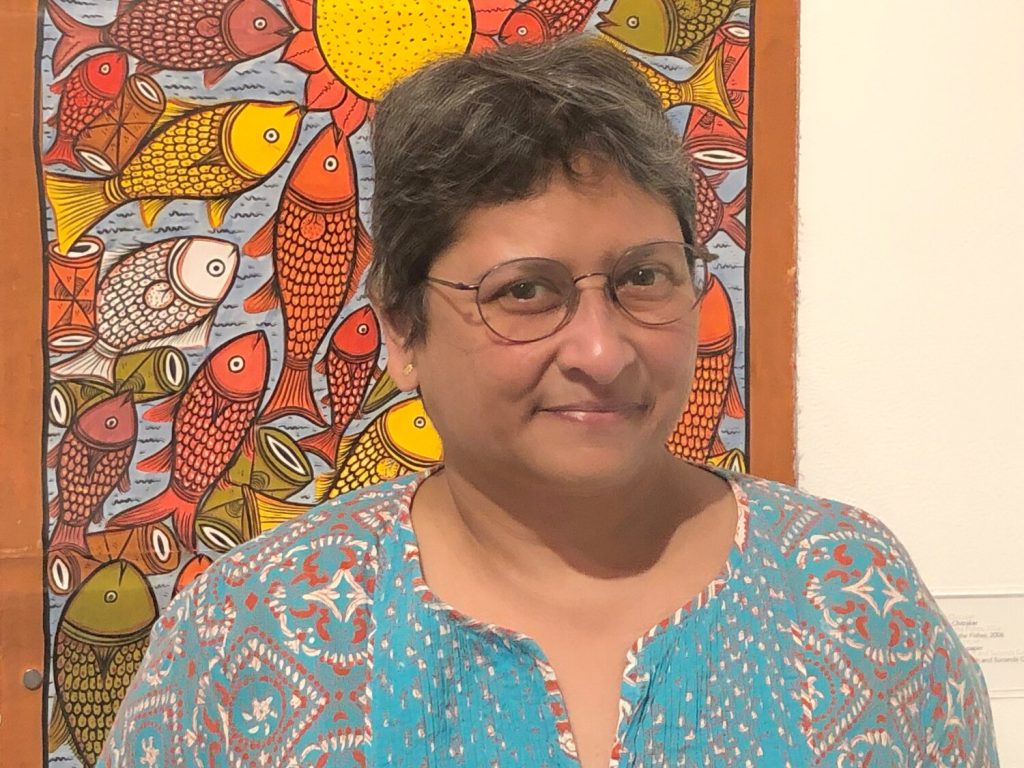Introduction
Chandreyi Basu, a professor of art and art history at St. Lawrence University, finds herself in a state of discomfort with the exhibit she has curated. Titled “Environment, Health and the Body in Traditional Paintings from Contemporary India,” the showcase at the Brush Art Gallery features the works of 35 contemporary outsider artists from rural India. Basu’s intention is to challenge the conventional Western approach to art appreciation and encourage gallery-goers to think deeply about the exhibited artworks.
Challenging Western Art Norms
Basu contends that the prevailing Western perspective that art should “speak for itself” is rooted in racial and class-based views of the gallery experience. To bridge the gap in understanding, she has incorporated extensive text explanations alongside the artworks. This approach is aimed at making the paintings’ meanings more accessible to Western audiences who may not fully grasp the cultural and social contexts of the pieces.
Contextualising the Art
One example from the exhibit is a piece by artist Dulari Devi, which depicts the worship of the river Kamla and the goddess Kamleshwari before the harvesting of the freshwater makhana crop. Basu’s explanations help viewers understand the significance of the artwork, such as the emphasis on the goddess’s connection with the fisherman community, marked by her distinctive nose ring in the shape of a fish pattern.
Themes of Social Inequities
The exhibit’s central theme revolves around social inequities, shedding light on the challenges faced by marginalised communities in India. The artworks reflect the consequences of decisions made by higher classes and the government, which often adversely affect the livelihoods of the less privileged. This theme of social injustice is prevalent throughout the exhibit.

Artists as Witnesses, Not Activists
Basu emphasises that the artists featured in the gallery are not necessarily activists but rather individuals expressing their personal experiences within their regional painting traditions. These traditions encompass various styles, from the Gond painting tradition of central India to the Warli tradition in western India.
Reflections on Privilege
Curating this exhibit has prompted Chandreyi Basu to reflect on her own privilege, having been educated at elite Western schools. She now recognises the importance of connecting with the stories and contexts of marginalized communities in India. The exhibit aims to bridge cultural gaps and encourage viewers to consider issues in India alongside those in their local community.
Creating Meaningful Dialogues
Basu hopes that the exhibit will serve as a platform for meaningful dialogue, allowing gallery-goers to connect issues in India with their own surroundings and local artists who interpret these issues. She believes that, in the context of movements like Black Lives Matter, it is crucial to use the artwork to create dialogues that extend beyond the artists’ intended narratives.
A Message of Unity
At the heart of the gallery, a long Bengali scroll titled “I See the Promised Land” extends from the ceiling to the floor. It portrays a biography of Martin Luther King set in India, with Rosa Parks wearing a sari. The scroll contains scenes where people hold signs in Bengali that read, “We have dreams, too.” Through this artwork, Basu aims to convey the message that regardless of geographical boundaries, our lives and futures are interconnected.

Conclusion
“Environment, Health and the Body in Traditional Paintings from Contemporary India” challenges Western norms of art appreciation and invites viewers to delve deeper into the social and cultural contexts of the exhibited artworks. Chandreyi Basu’s curation serves as a bridge between different worlds, offering a glimpse into the experiences of marginalised communities in India and prompting self-reflection on privilege and interconnectedness. Through this exhibit, art becomes a powerful tool for fostering dialogue and understanding.

Contributor





